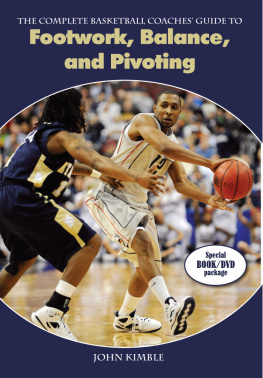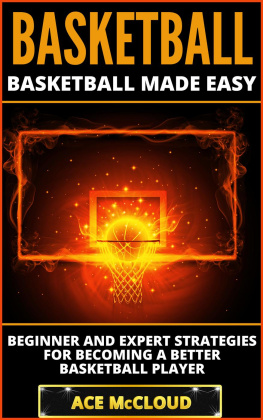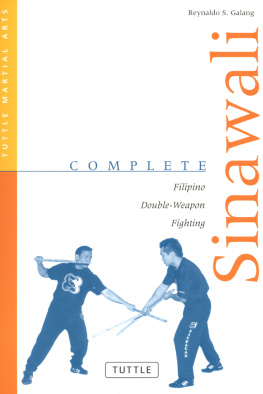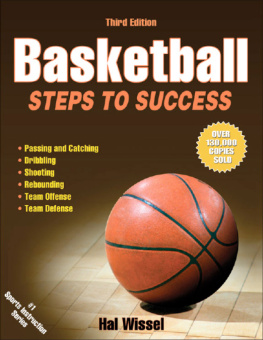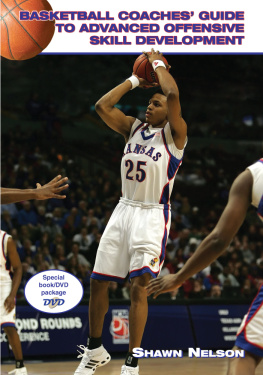
Chapter 1: Teaching Methods and Philosophy on Drills
Teaching Methods
and Philosophy on Drills
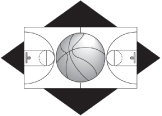
Failing to prepare is preparing to fail.
Coach John Wooden
Teaching Fundamentals, Techniques,
and Offenses by Utilizing Drills
Countless fundamentals, skills, techniques, and concepts must be taught to each individual basketball player as well as to the overall team. Many fundamentals and techniques strictly apply to the offensive phase of the game. The defensive portion of the game includes numerous individual and team concepts, skills and techniques, and fundamental footwork that must be taught to each player and the team.
A team is only as strong as its weakest link. An individual player is only as strong as his mastery of the basic fundamentals of the basketball skills necessary for success. Therefore, countless techniques must be taught to each player in order to maximize each players skill level. When each players skill levels are maximized, it makes the team a stronger and more cohesive unit. Unfortunately, practice time is a significant constraint to the amount of teaching by coaching staffs and the amount of learning by the players.
A seemingly unlimited amount of material must be taught to players in a limited period of time. This task can be difficult for a coaching staff to perform.
For a coach to be successful, he must be an excellent teacher. He must have a fundamentally sound concept of how to convey what needs to be taught to his players and to motivate those players to learn the fundamentals.
The coach must teach the proper techniques to the players. He must show the players how those techniques are to be performed. Players also expect to know why they are to perform tasks, not just that they are to do them.
If coaches want the players to successfully execute those skills and techniques, coaches must confirm to players the importance of proper techniques, demonstrate to players how to perform those skills, and provide game-realistic settings for players to practice, improve, and perfect those skills and techniques.
One particular coaching philosophy is a belief that in order for a basketball program to be successful, coaches must demand that every player be fundamentally sound in how to perform all techniques of the game. The coaching staff must be able to motivate every player in performing those fundamentals at their highest level of intensity.
Attention to detail by the coaching staff is crucial, as well as the positive and constructive criticism that must come with the teaching and the drill work. Game-realistic scenarios must be implemented to simulate game-like conditions. Drills must be created to practice the various offensive and defensive skills and techniques.
The old clich, Practice makes perfect, should not apply in your program. The philosophy should be: Perfect practice makes perfect!
Success will come in small, consistent increments so that players confidence in themselves, in their teammates, and in the system will slowly grow and increase as time goes on The whole-part-whole teaching method (with a great emphasis on the how and the why on every technique, every skill, whether it is offense, defense, or transition) gives the best results. Players must have confidence that the methods and techniques they are being taught are the best possible ways for them to be successful. The manner in which the skills are being taught to the players should give the players assurance they will be able to successfully perform those skills.
In basketball, games can be won in many ways. Coaches can utilize many different teaching methods and support numerous styles of play. For the team to have confidence and trust in the coaching staff, the coaching staff must be students of the game. After carefully choosing the specific techniques, methods, and styles of how to play the game, the coaching staff must convey that strong belief and confidence to each and every team member. Then and only then will players be sold on the philosophy of the staff. The players will give their heart and soul to the program and play with the needed intensity in order to be successful. Players must believe in what they are doing (whether it is a type of technique, an offense, a defense, a play, or whatever they are performing), if they are to perform at a high degree of intensity. With that high level of intensity often comes the success of the players.
When something new, such as a new offense, is introduced to the team, the offense should be introduced as a whole entity. Then, the offense can be broken down to the basics that are needed for the offense to be successful. The specific techniques required for the offense to be able to operate efficiently and successfully should then be demonstrated. Those particular skills in game-realistic drills are worked on only after the players have graduated to that particular level of performance.
The first drills that are taught and practiced are more teaching drills than intense and competitive drills. The first drills are actually broken down and have levels of skill and learning competencies that all players must accomplish before they get to the high-level skill performance drills.
Whole-Part-Whole Teaching Method
In the phrase whole-part-whole method of teaching, the whole is the entire play (or concept) that is being introduced. All five players participate in this phase. The parts are the specific techniques performed by each of the five players. Each player has different skills and techniques that must be performed in order for the play to be successful. A part could be just one player working on learning, understanding, and executing one simple task that takes place in just one specific situation. The part could be one player performing several tasks in a wider range scenario, or the part could be five players doing several tasks simultaneously.
For instance, if you are introducing a new continuity offense to the team, the coaching staff should first show the team the entire offensive continuity. The staff would have five players demonstrate the offense by walking them through the offense, while the remaining players observe. Then, the staff would rotate other players into the offense until all have gone through the offense. Coaches would have two groups of players go through the offense at higher degrees of speed, until game speed is reached. No defense is used, and no shots would be taken, so that the continuity offense could be run for longer periods of time, without any interruptions.
Coaches should not allow any distractions during this learning phase. Once the basic movement patterns and rules are learned by all team members, coaches would work on all players practicing their shots from the spots they would get their shots during the game.
Coaches would demonstrate where and how the shooters would receive passes to get their shots. Coaches would have the players practice those shots and have other players practice the passes they would make to those shooters (from the same locations on the court that they would in a game). Coaches should remember that every drill must be as game-realistic as possible.
Once the players learn their specific passing and shot locations and they start feeling comfortable with understanding the offense, the level of intensity of the breakdown drills is stepped up. Goals and performance standards are established, with these goals and standards increasing in difficulty as the players progress in their skill development and knowledge of the concept being introduced.
Next page
